Gating content: Top strategies that generate more leads
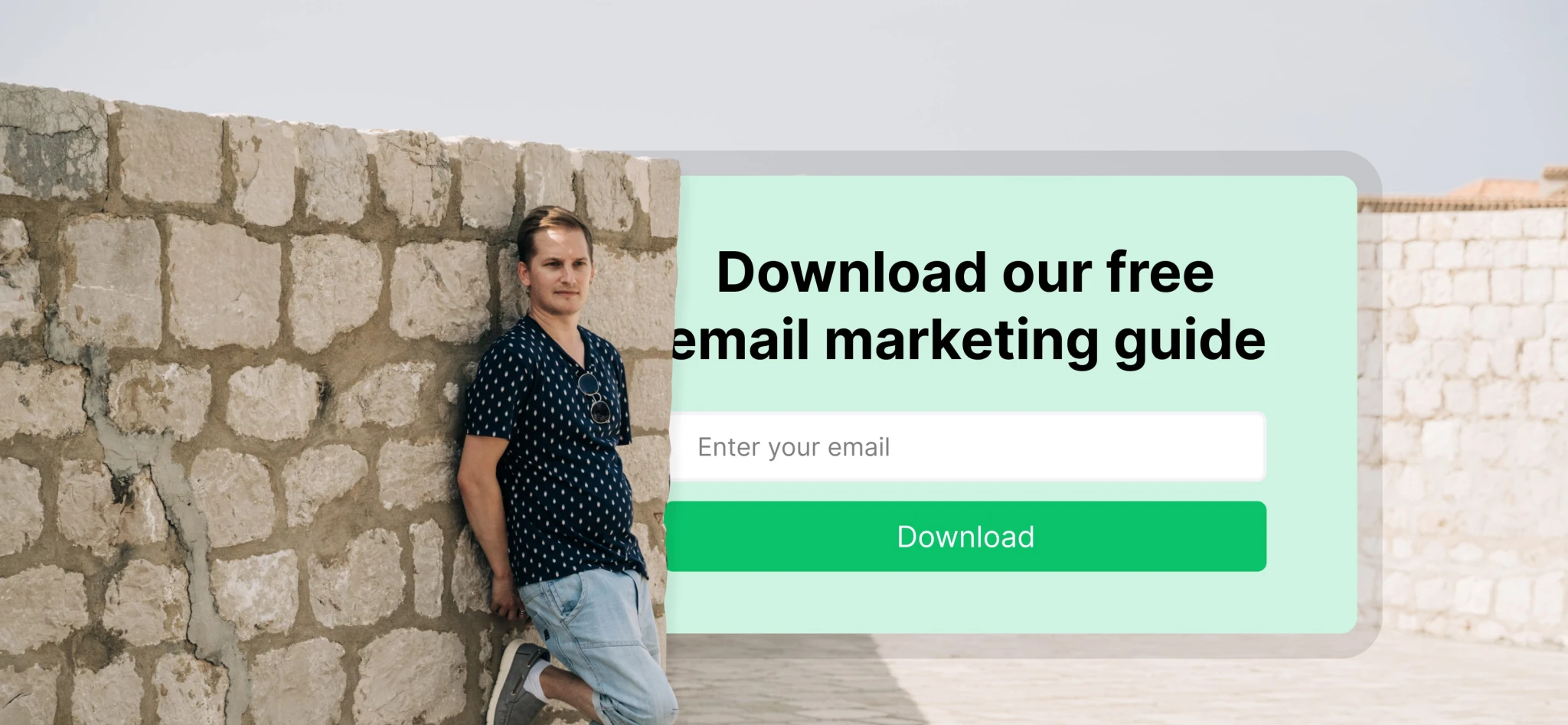 Bob, Lead Site Reliability Engineer
Bob, Lead Site Reliability Engineer
Marketers are used to giving away quality content for free, but sometimes it’s better to charge for your efforts. The best currency for marketing teams isn’t cash or crypto; it’s the email addresses of potential customers.
Offering content in exchange for an email address is called content gating, and it’s an effective way to generate business leads. Once you have the address, you can contact these people using email marketing to build trust and convert them into customers.
A good strategy for gating content isn’t as simple as hiding a resource behind a form. You need the perfect mix of valuable content that appeals to your audience, a way to generate website traffic, and the tools to collect email addresses and send content.
Read on to find out more 👇 🧐
What is content gating?
Content gating is when you place online content behind a lead capture form or a signup form. Website visitors can only access the content when they hand over their email addresses.
Once marketing and sales teams have the information, they can send nurture emails that provide more information about the product and push the lead down the email funnel.
Some websites, such as online publishers, use gated content to generate subscriptions. They hide the content behind a paywall so only people who have a paid subscription can access it.
The most effective gated content is high-quality pieces with insight the user can’t get elsewhere. This typically includes original research and data insights, industry guides, recorded webinars, downloadable templates, ebooks, whitepapers, or reports.
Benefits of gated vs. ungated content
While gated content is hidden by a lead capture form, ungated content is freely accessible. Common examples include blog posts, podcasts, YouTube videos, and help content.
An effective content marketing strategy uses both gated and ungated content. Ungated content generates traffic and page views, while gated content converts website visitors into leads.
Pros of gated content
✔️ Generate leads
✔️ Increase email subscribers
✔️ Discover information about your leads
✔️ Push people toward a sale
Pros of ungated content
✔️ Gain visibility through social media or SEO
✔️ Increase brand awareness and thought leadership
✔️ Make support content easily accessible
✔️ Other websites may link to the content which improves site authority for SEO
5 examples showing when to use gated vs. ungated content
Choosing to gate content isn’t an easy decision to make. You spend a lot of effort creating your resources, so you want to make them as impactful as possible.
This section will highlight some examples of gated and ungated content. We’ll then examine why the company may have chosen to publish the content as it did. Use these examples to inform your strategy and understand when gating content is the right decision.
MailerLite email calendar
We offer several downloadable resources as gated content at MailerLite. We promote these on blog posts and automatically send them via email.
This email calendar is one of our most popular resources. We promote it as a lead magnet on several different email campaign planning-related articles. Complete the form below to download the resource and see how it works.
This lead magnet works because it is valuable to people who want to start email marketing. The spreadsheet format means the templates work as downloadable resources people can keep and reuse.
A lead magnet is anything that companies use to generate leads. This can be gated content, but it can also be offers such as free trials, product demonstrations, and service proposals.
Hubspot State of Marketing Trends Report 2022
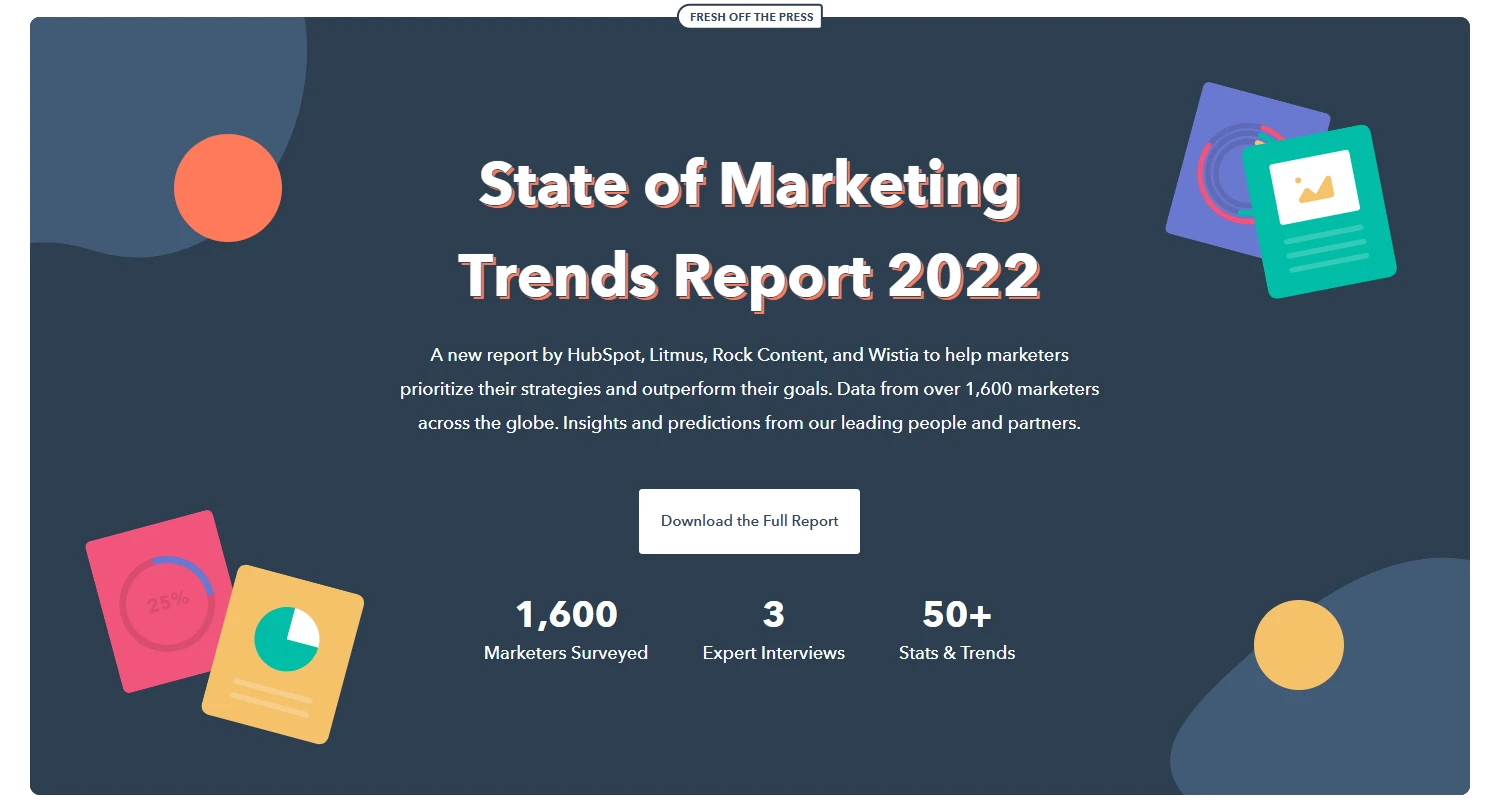
Hubspot has gated resources on many marketing and sales topics. The State of Marketing Trends Report is a deep dive into the latest marketing strategies.
It’s an appealing resource because it has exclusive insight from 1,600 marketing professionals about up-to-date trends.
Downloading the gated report is the best way to access all the data. But Hubspot also publishes insights in ungated articles. This promotes the report and ensures that more people see the content.
SEMRush digital marketing courses
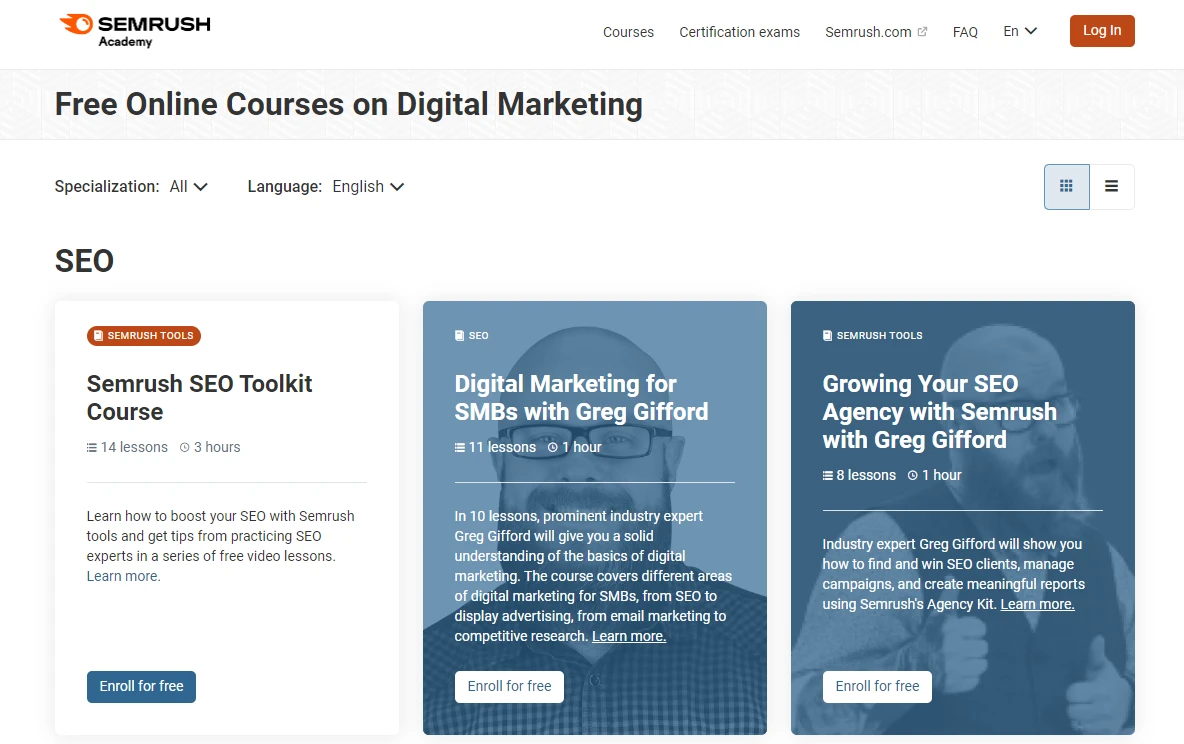
SEMRush has a library of SEO and digital marketing courses that teach people about the industry and how to use the company’s tools. Anyone can sign up for one of the courses as long as they hand over their email address.
These courses are valuable lead magnets because anyone interested in learning about digital marketing is a potential SEMRush customer. They work because courses are high value and SEMRush is a trusted brand.
Ahrefs digital marketing courses
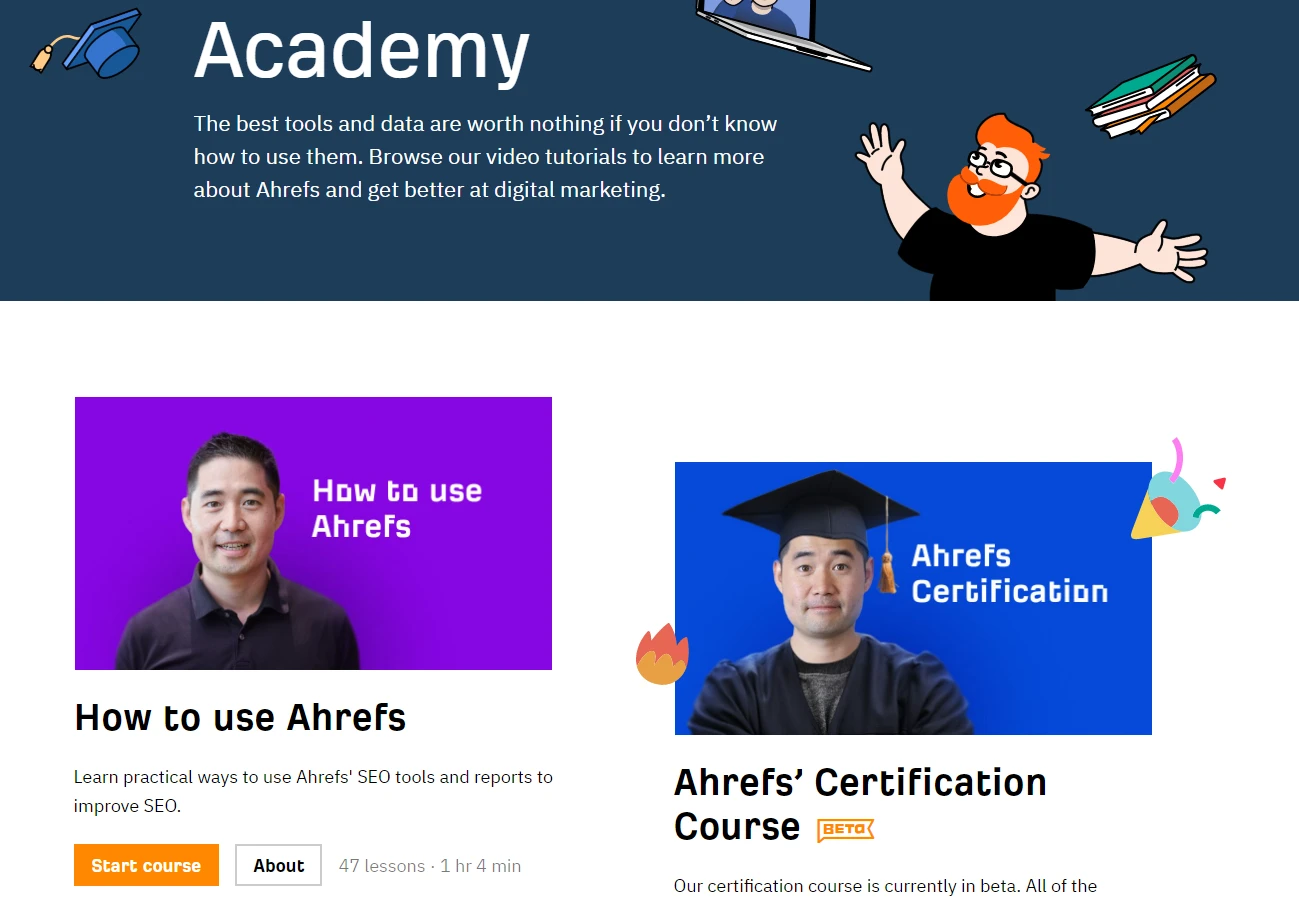
While SEMRush requires users to sign up for its courses, Ahrefs offers its learning library freely. Ahrefs and SEMRush are similar products, making this the perfect example of how there’s no correct answer about whether to gate content or make it accessible to everyone.
There’s no barrier to taking the Ahrefs course, which may result in more people using it than they would otherwise. The issue is that the course won’t generate any leads for Ahrefs.
BrightLocal Local Consumer Survey
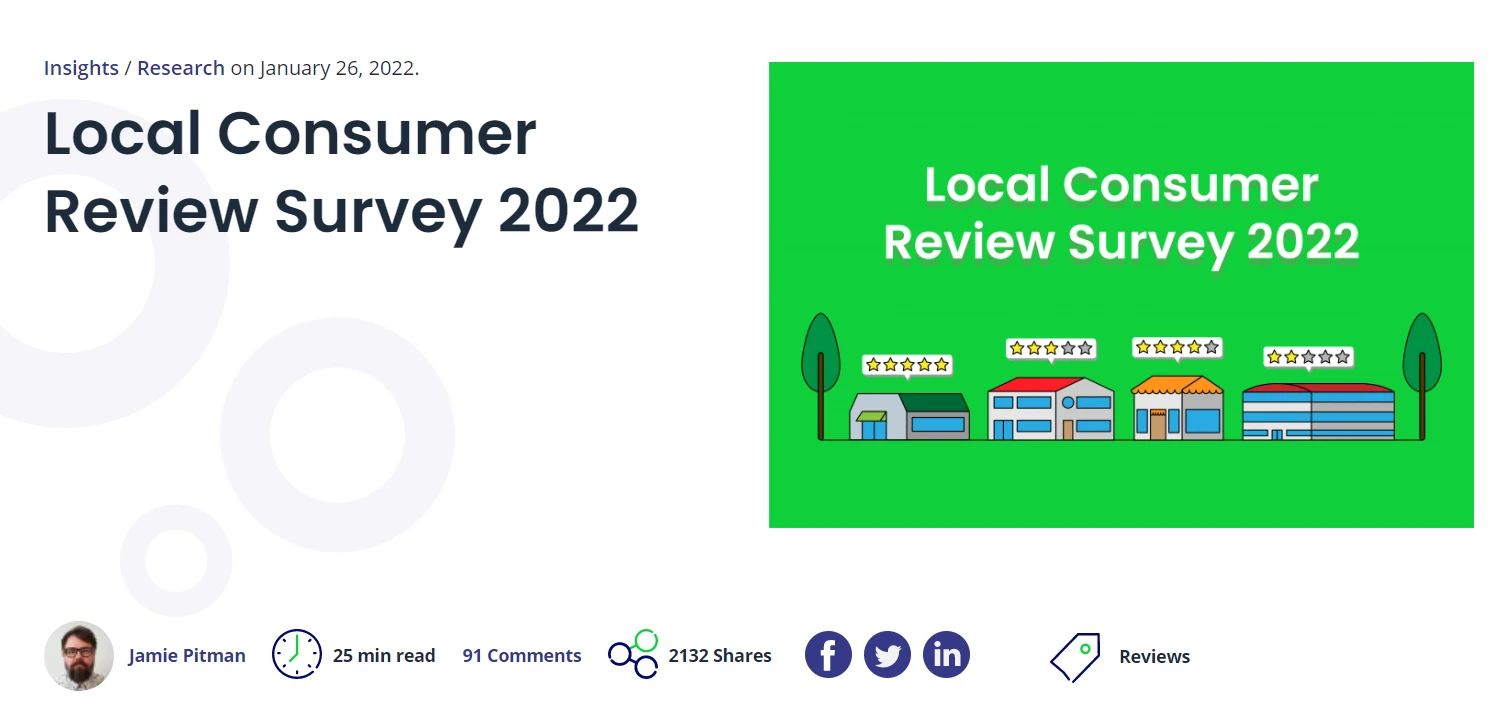
The BrightLocal Local Consumer Survey is an in-depth report with a ton of unique insight. BrightLocal has published the content ungated—even though it easily provides enough value to work as a gated piece.
We don’t know why the company made this decision. If we had to guess, we’d say it's because the page attracts a ton of backlinks, which helps increase the site’s SEO performance.
Check out the screenshot below, you can see the page has over 165,654 links from 13,293 domains! This is potentially more valuable to the company than the leads the page would generate if the content was gated.
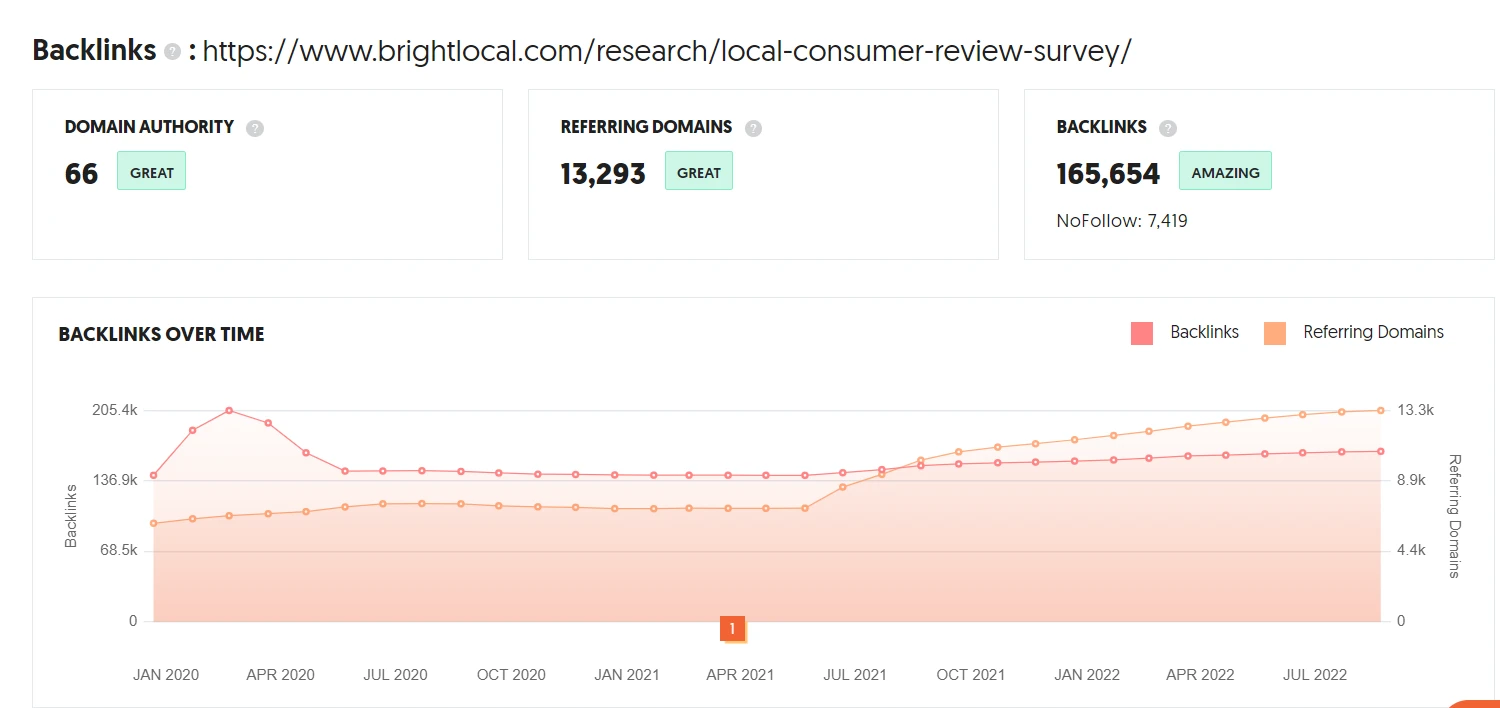
How to decide if you should start gating content
Are you still unsure about whether to start gating content? Then answer these three questions to simplify the decision process.
Do you have website traffic?
Is gated content the best way to convert visitors into subscribers?
Do you have (or can you create) gate-worthy content?
If the answer to all three questions is “yes,” creating gated content is a no-brainer. Here’s more information to clarify each point.
1. Do you have website traffic?
You need website traffic before you start gating content. If you don’t have enough traffic, people won’t see your content to download it!
Focus on generating website visitors before you start gating content. You don’t need a ton of traffic for gated content to be effective; getting the right visitors is more important.
If you need traffic quickly, consider using paid ads and pointing these people towards your resource. Gated content can work well as part of a paid ads campaign.
2. Is gated content the best way to convert visitors into subscribers?
If you have traffic, think about whether gated content is the best way to generate quality leads.
There are plenty of other lead generation methods, such as free trials, product demonstrations, or pushing users toward your sales pages. Any of these tactics may be more effective than content gating.
Look at your more established competitors and see if they use gated content. If they do, there’s a good chance it’s working for them. If none of your competitors are gating content, it might not be effective in your industry.
For example:
✔️ Gated content is probably an effective strategy if your product is a CRM. Industry leaders like HubSpot, SalesForce, and PipeDrive all offer gated content.
❌ Gated content probably isn’t effective for clothing brands. Established sites like Asos, Nordstrom and Nike don’t offer gated content.
3. Do you have (or can you create) gate-worthy content?
Check whether you have existing content that would be suitable for gating or the expertise to create such content.
If you do, it’s an easy decision to at least test gating content to see if it generates signups.
If you don’t have content or in-house expertise, you’ll have to decide whether the cost of hiring someone to create the content is likely to generate a positive return on investment.
6 tips to make the most out of content gating
Maybe you’ve decided to gate content. Or maybe you’re still trying to discover more. Either way, these 6 tips will help with the next steps.
1. Create gated content for each content hub
Gated content gets the most downloads when it directly helps solve the challenges your articles discuss.
It would take a long time to create gated content for every article on your site. A better alternative is to create gated content for the main topics you cover. You’ll then be able to offer lead magnets throughout your website.
2. Align content to the sales funnel
Consider creating resources to use at different stages in the sales funnel. Content for the awareness stage typically relates to challenges facing people who visit your site. As the prospect nears conversion, the content can be more sales-focused.
At MailerLite, we use helpful resources like content calendars and email templates to appeal to people at the beginning of the sales funnel.
We also have a series of gated academy courses that explain the details of our product to people further along the buyer’s journey.
3. Optimize your registration forms
Registration forms are a major part of your gated content’s success—use them to gather information about the lead, including their contact information.
First decide how many fields to include in your form. Asking for more information can help with your sales targeting, but it can also put people off signing up for the resource. Read our article about sign up form best practices to learn more.
At MailerLite, we only ask for an email address. We do this because one field forms have the highest conversion rates and we can find out more about the subscriber later.
Other companies use more complex forms. By collecting data upfront, they are able to find out more about the lead and send them targeted messages. Meeting software firm Hugo asks for the company name, industry, job function, and the number of employees at the business.
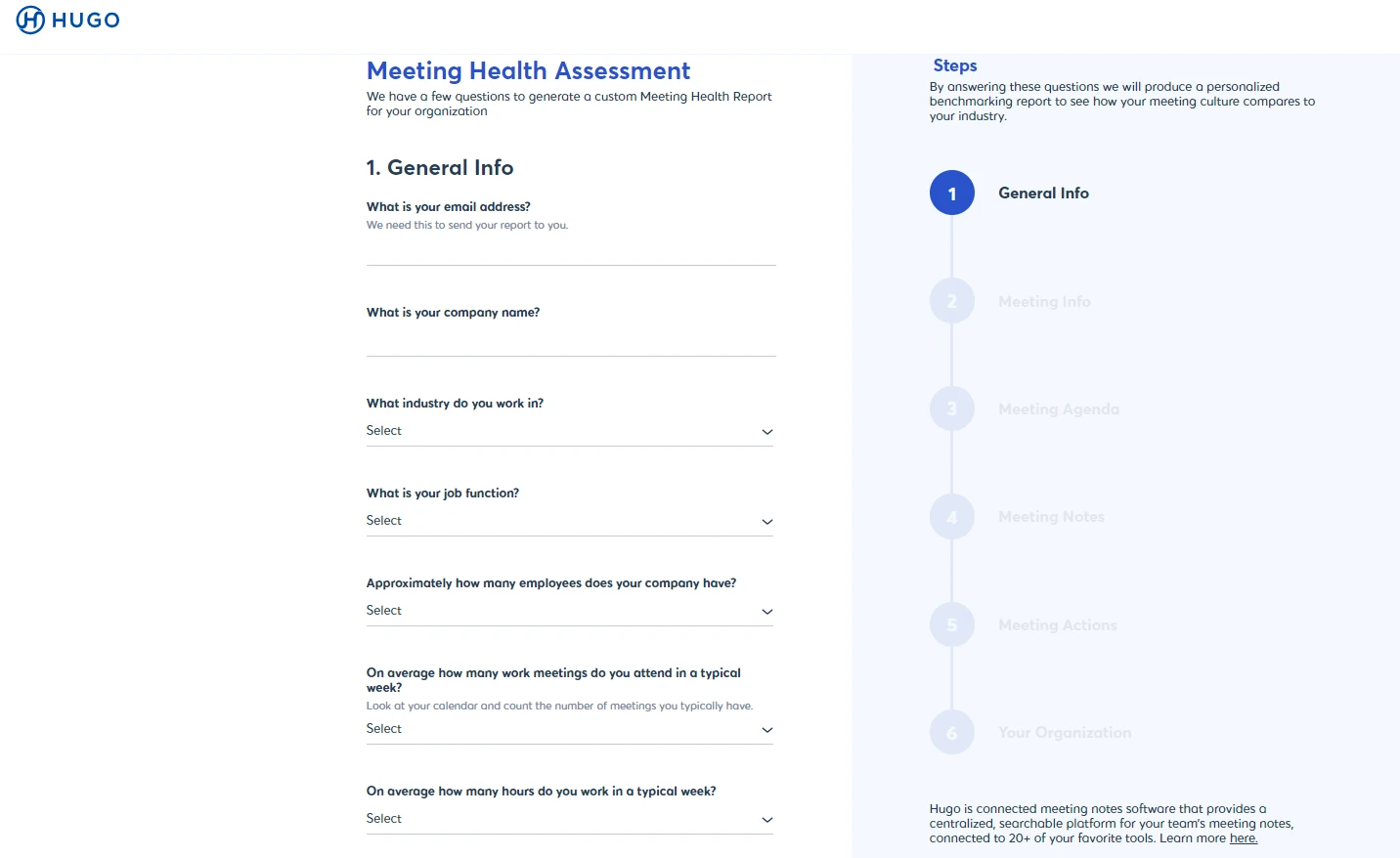
A common strategy is to ask for more information as the prospect moves down the sales funnel.
Top-of-funnel content like blog posts is ungated to attract visitors
Ask for an email address to access middle funnel resources like guides or templates
Ask for more information to access bottom-of-the-funnel gated content
4. Use in-content forms or dedicated landing pages
In-content forms, pop-ups and landing pages are effective ways to promote your gated content.
Pop-ups and forms work because the website visitor doesn’t need to move to another page to get the resource. These forms can have a high conversion rate if the resource is valuable and related to the content.
This pop-up on the Zendesk website appears when the visitor clicks the “Download now” link. The user can sign up for the form without leaving the article.
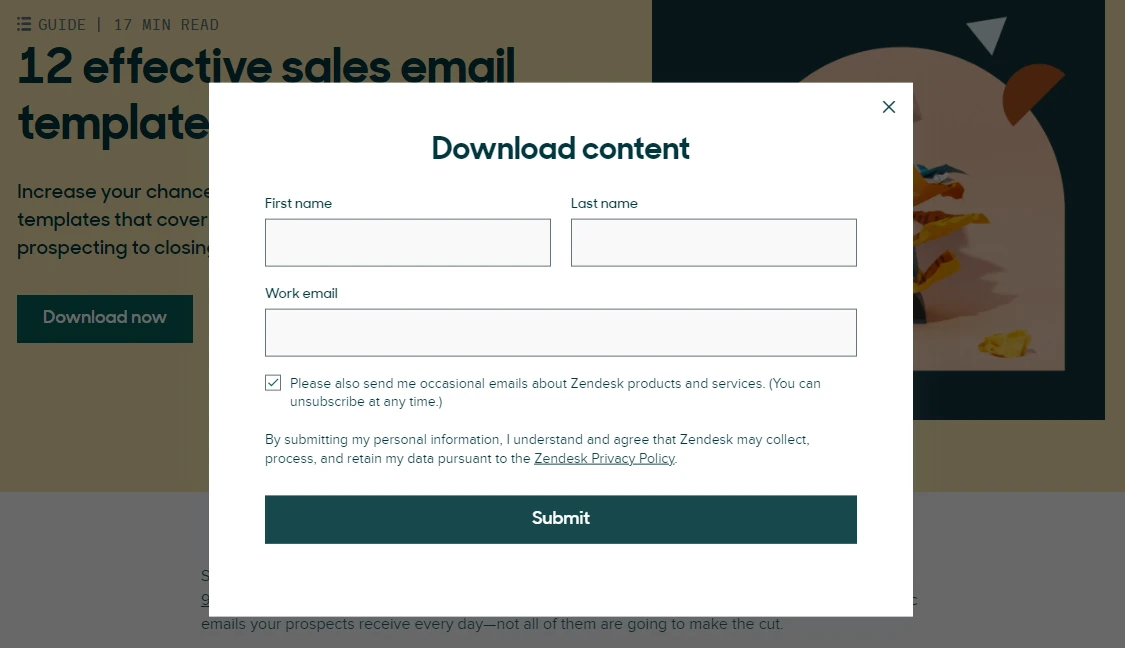
Dedicated landing pages work because you have more space to sell the value of the gated content. This is useful if you plan to ask for a lot of information to access it.
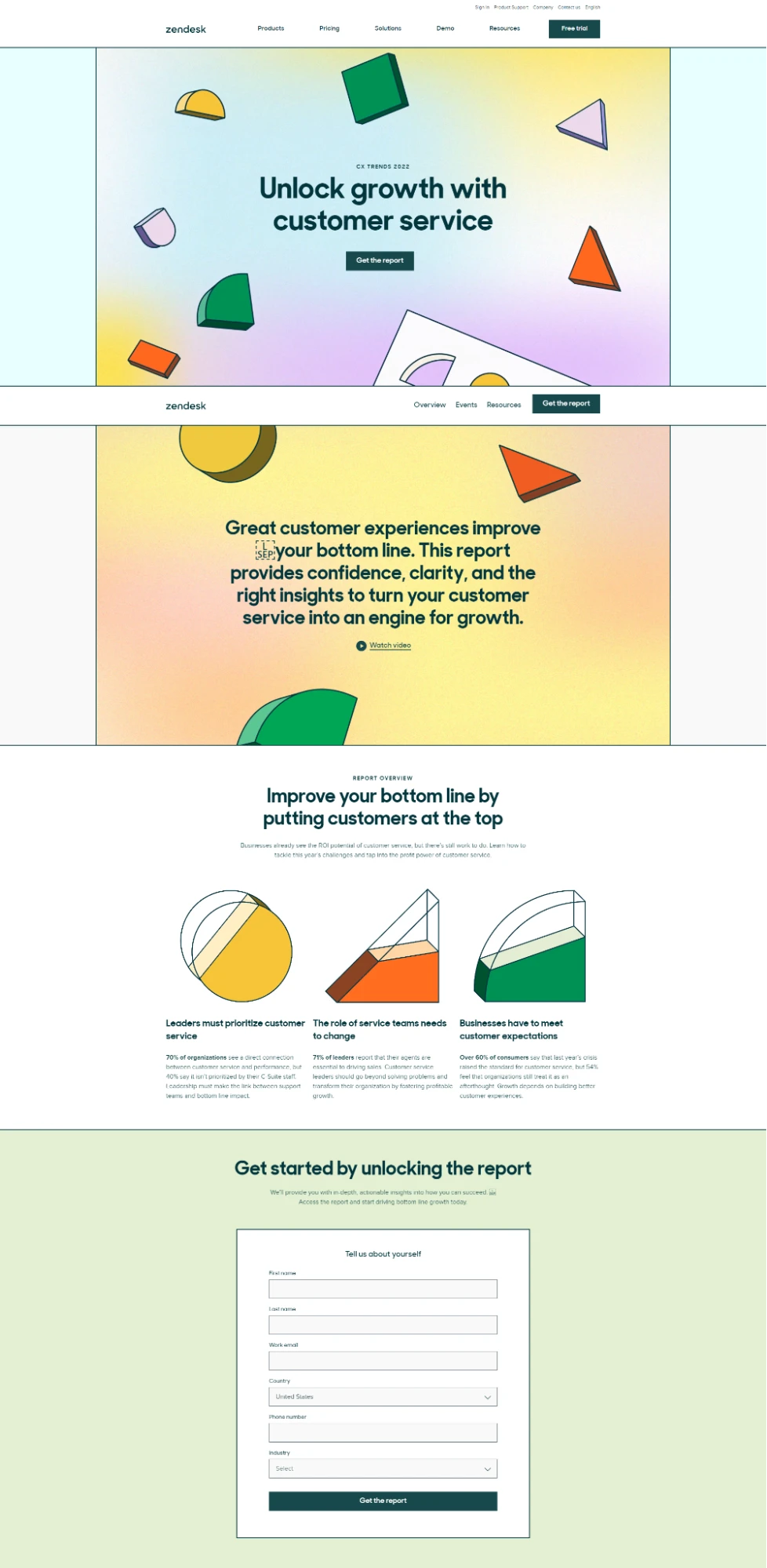
The landing page for Zendesk’s customer service trends report showcases its value before including a longer sign-up form at the bottom of the page.
5. Segment your audience
An effective content gating strategy doesn’t end when the user downloads the content. Your post-signup strategy is just as important.
Email segmentation is one of the most important things you can do. This lets you group your list around factors such as interests or position in the customer journey. You can then send relevant content to push each group towards a sale.
Here are 3 ways you can segment your list:
1. Segment based on the topic
Send emails that are related to the topic of the requested resource. Send marketing-related content to people who download a marketing resource.
2. Segment based on the sales funnel
Send content related to the resource’s position in the sales funnel. Send informational content to people who request top-of-funnel content, and sales-focused content to people who download bottom-of-the-funnel resources.
3. Segment based on email interaction
Segment people based on how they interact with your content. Here are three ways to track email interaction:
Send email surveys and segment your leads based on their answers
Track email interaction such as clicks and segment leads based on this information
Link to your email preference center and let recipients choose their interests
6. Use automation to nurture new leads
Our final tip is to use marketing automation to nurture leads and push them towards a sale.
Start your sequence by sending the new lead a link to the gated content they requested, then send relevant follow-up emails.
Some types of emails you can send include:
Welcome emails: Introduce your product and brand
Educational content: Provide information to help with the lead’s problem
Product explainers: Show how your product helps the lead
Exploratory emails: Discover more about the lead
Social proof emails: Show how others benefit from your product
Webinar invites: Build a relationship and establish expertise
Offers: Emails with discounts, offers, coupons, or free trials
Choose several types of content and then put it together to push the lead towards a sale.
How to start gating content using MailerLite
MailerLite contains all you need to start gating content. You can create forms and popups and then set up automated workflows to deliver the content.
Start gating content today
Create automated gated content workflows that generate leads. MailerLite is easy to use, and you can start for free.
Start by following this 4-step process to send a lead magnet to new subscribers.
1. Create the content you want to gate
First create the content you want to gate. Then upload it to a cloud storage platform like Google Drive to generate shareable links to add to your emails. You may also be able to host the file on your website.
2. Create forms
Next, create a signup form using our drag-and-drop form builder. Choose from a form that you embed into your content or a pop-up that appears over the content the user interacts with.
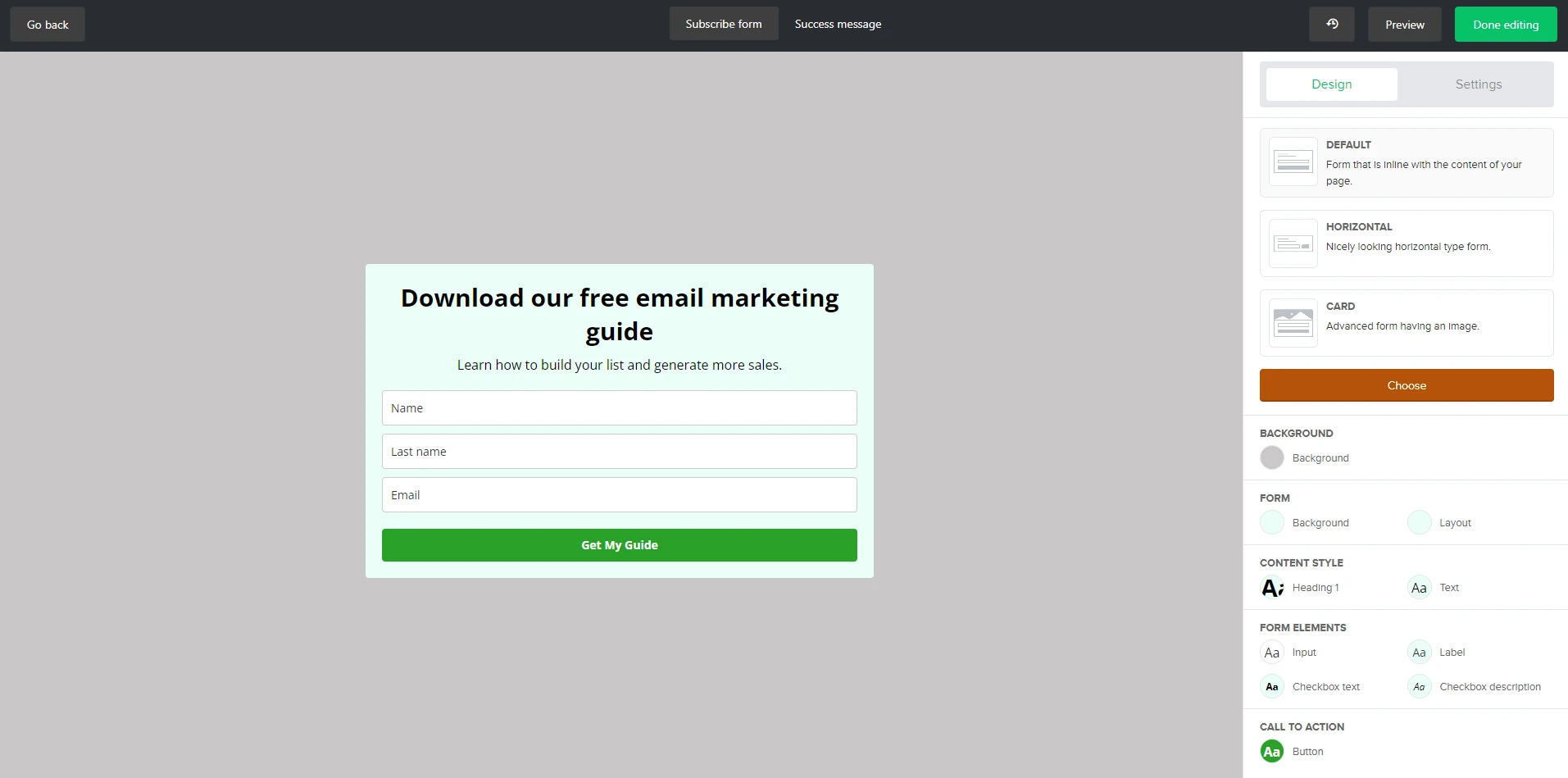
Whichever option you choose, we have a library of designs to help you get started and plenty of customization options you can use to adjust the look and feel of your form.
Some of the key options are:
Add a headline and description
Customize the button and call to action (CTA)
Choose which fields to add to the form and the order they appear
The colors and font of the background, text, and buttons
Whether the form is inline with your content, horizontal, or a card
The width of the form
At this point, you can also add a success message. This is what customers see when they fill in your form. Use this to tell customers that you have sent the content to their inbox. You can also include a link to the gated content within the success message.

Learn more about how to create sign-up forms that convert here. Or click here for detailed instructions on creating embedded forms using MailerLite.
3. Set up an automated email
Next, set up an automated email that will deliver the gated content to the person who requested it.
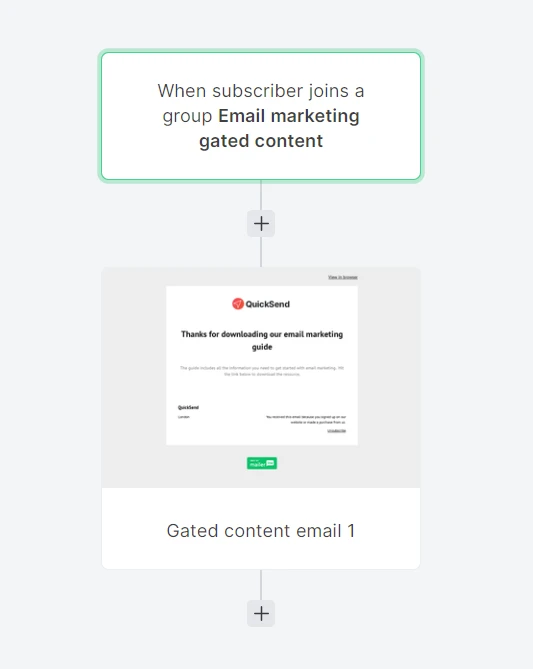
You can do this by heading to the automation section of the MailerLite dashboard and clicking create a New automation.
You then need to set up a workflow triggered by someone joining the group connected to the form. Do this by selecting the trigger When subscriber joins a group and choosing the relevant group.
Now you can add the email. Do this by hitting the + button and choosing Email. Choose the name and subject line and design your email. We have plenty of templates you can use to get a headstart.
Like the form builder, our email builder uses an intuitive drag-and-drop interface and has plenty of customization options.
At this point, you can add further emails to your workflow to help nurture your leads. Read more about how to set up email automation workflows here.
4. Embed the form into your website
The final step is to embed the form into your website. Head back to the form and scroll to the section called Embed form into your website.
Here you’ll see two Javascript snippets you can paste into your website. Add the first to your website code right before the closing “head” tag, and add the second where you want the code to appear.
Most popular CMS tools make it easy to add code to the head tag on your website. We also have a WordPress plugin that you can use to set up forms without adding code to your website.
5. Bonus: Create a landing page
You can also use MailerLite to create a dedicated landing page for your gated content.
Do this by heading to the Sites section of the dashboard, selecting Create site, choosing Landing Page, and then choosing which subscriber group to add sign-ups to.
Choose a template or start from scratch to create your page. You can then use our drag-and-drop page builder to customize the content so it matches your needs.
Here are some elements that can help your landing page convert:
Title and heading: Highlight the major benefit of your report
Text blocks: Add further information about why the report is useful
Testimonials: Use these to show how people have benefited from the content
Signup form: Let people can give their information in exchange for the gated content
Once you’re happy with your page, you can easily publish it to a MailerLite domain or to a page on your own website.
Don’t forget to promote your gated content 📢
Boost the impact of your gated content by actively promoting it. There are many promotional strategies you can use, but the best for you are the places you already have an audience.
This could be your existing content, email list, or social media subscribers. Paid ads can also be effective.
Ungated content
The easiest way to promote your gated content is to add signup forms to relevant ungated content. Embed your forms into your pages where you want them to appear or add pop-ups to relevant pages to increase sign-ups.
Also consider creating new content based around the information in your gated content. If your gated content is a report, repurpose the insights into blog posts or create YouTube videos that highlight key points.
Your email list is a great place to promote your gated content. Send an email to your list promoting your new report, course, or ebook.
People on your email list are already familiar with your brand, so use your list to promote bottom-of-the-funnel content to push subscribers further down the sales funnel.
At MailerLite we recently promoted our new website building course to our existing subscriber list. This resulted in 1,000+ people signing up to learn how to use our software to build websites.
Paid ads
Use paid ads to increase the size of the audience that can see your gated content. It’s an easy way to quickly increase content visibility.
DataDog promotes its serverless report on social media to attract people who are interested in serverless application development.
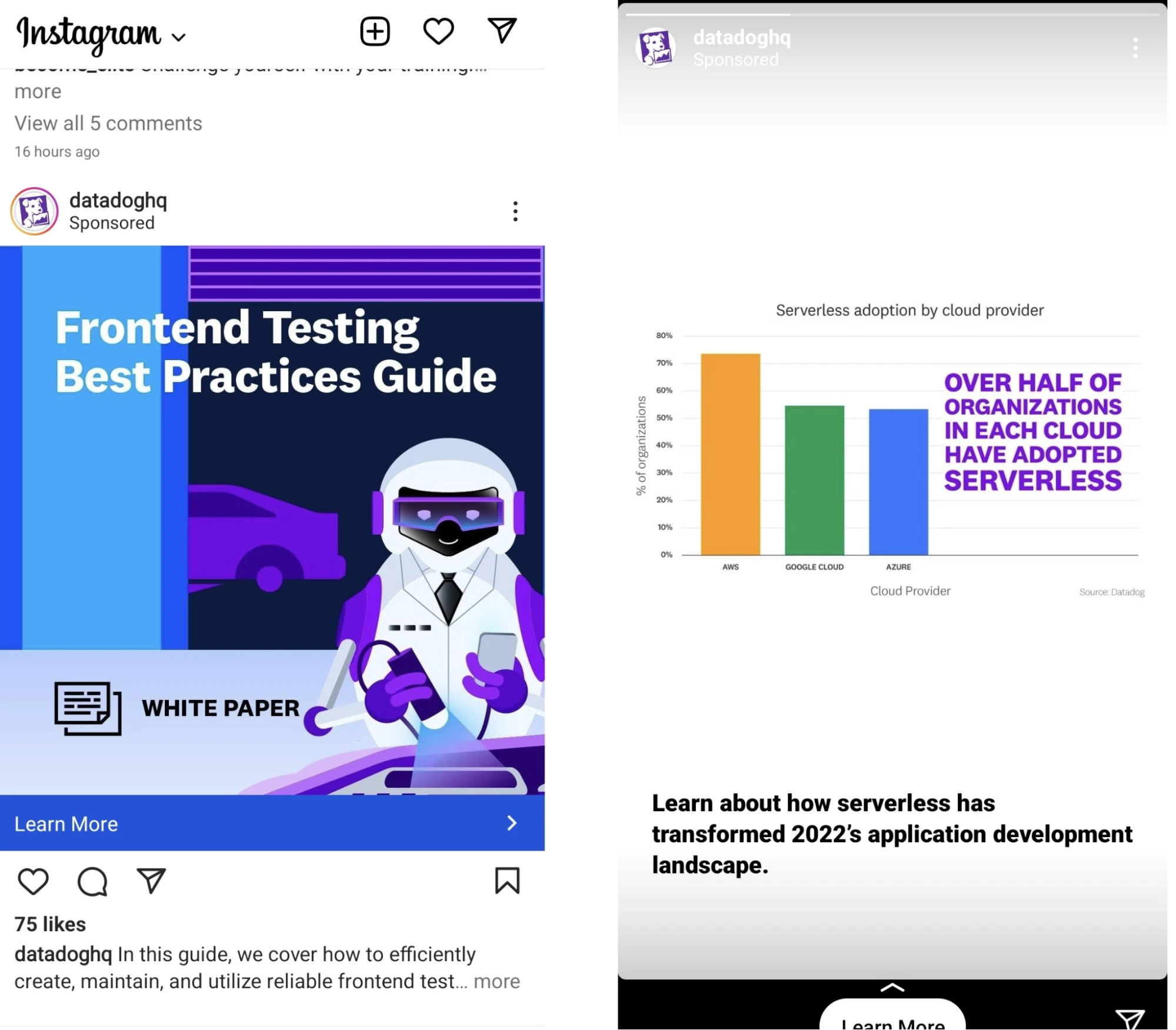
Before you use paid ads to promote your gated content, calculate how much each signup is worth. This will help you decide whether it is possible to generate a positive return on your ad spend.
Consider promoting your gated content on free channels first. Use the content with the highest conversion rate as part of your paid ads campaigns.
Social media
Post your gated content to your social media channels if it is relevant to the needs of your followers. You’ll increase the visibility of your content, and you may bring social media followers into your email funnel.
3 steps to start gating content today 🚀
You’re probably keen to start gating content if you’ve read this far. Here are 3 quick steps you can use to start today:
Decide which content to gate. Look at your existing resources and choose the ones that offer the most value, or create a new resource that solves a key customer problem.
Create website forms. Next create forms and add them to your website. Your leads can use these forms to request the content.
Set up workflows to automatically deliver the content. This ensures leads can access the content as soon as they request it without you having to do a thing.
Follow these three steps and you’ll have an automated gated content workflow up and running. And once your first resource is working, you can start to create other gated resources for different customer segments or for different parts of the sales funnel.
Have you ever tried gating content to generate leads? Let us know the type of content you used and the results you achieved in the comments!

